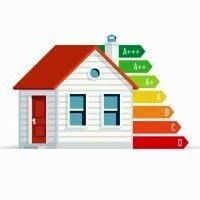(BRUSSELS) – A new version of the EU energy label became effective in shops and online retailers Monday, applying to product categories such as fridges, washing machines and TVs, and helping to cut energy bills.
From 1 March the new labels initially apply to the four product categories: fridges and freezers, dishwashers, washing machines, and television sets (and other external monitors). New labels for light bulbs and lamps with fixed light sources will follow on 1 September, and other products will follow in the coming years.
With more and more products achieving ratings as A+, A++ or A+++ according to the current scale, the object of the change is to return to a simpler A-G scale. This scale is stricter and designed so that very few products are initially able to achieve the “A” rating, leaving space for more efficient products to be included in the future.
The most energy efficient products currently on the market will typically now be labelled as “B”, “C” or “D”. A number of new elements will be included on the labels, including a QR link to an EU-wide database, which will allow consumers to find more details about the product. A number of ecodesign rules will also come into force from 1 March notably on reparability and the need for manufacturers to keep spare parts available for a number of years after products are no longer on the market.
“Until the end of February, over 90% of products were labelled either A+, A++ or A+++,” said Energy Commissioner Kadri Simson “The new system will be clearer for consumers and ensure that businesses continue to innovate and offer even more efficient products. This also helps us to reduce our greenhouse gas emissions.”
As well as rescaling the energy efficiency class of the product concerned, the layout of the new label is different, with clearer and more modern icons. Like the previous labels, the rescaled labels show more than just the energy efficiency class. For a washing machine, for example, they show at a glance the number of water liters per cycle, the duration of a cycle, and the energy consumption, as measured for a standardised programme.
A further significant change is the introduction of a QR code on the top right of the new labels. By scanning the QR-code, consumers can find additional information about the product model, such as data relating to the dimensions, specific features or test results depending on the appliance. All appliances on the EU market have to be registered in a new EU-wide database – European Product Registry for Energy Labels (EPREL). This will further facilitate the comparison of similar products in the future.
In addition to the new energy labelling rules, there are corresponding new regulations on ecodesign that take effect on 1 March 2021. These relate notably to the updated minimum efficiency requirements and reinforce consumer rights to repair products and support the circular economy. Manufacturers or importers will now be obliged to make a range of essential parts (motors and motor brushes, pumps, shock absorbers and springs, washing drums, etc.) available to professional repairers for at least 7-10 years after the last unit of a model has been placed on the EU market. For end-users, too (i.e. consumers who are not professional repairers, but like to repair things themselves), manufacturers must make certain spare parts available for several years after a product is taken off the market – products such as doors or hinges and seals, which are suitable for DIY action. The maximum delivery time for all these pieces is 15 working days after ordering.









